Blogger outreach strategy: A complete guide
-

Aaron Gray
- Blogs
-
 November 22 , 2021
November 22 , 2021 -
 20 min read
20 min read
What is blogger outreach? This is the question everyone is talking about. Experts in digital marketing say content is king. However, having brilliant and relevant content is useless when you fail to communicate it to your target audience. In this case, we say content may be king but content distribution is queen!

Yes, let your brand experience true royalty in the digital sphere by tapping the right messengers and channels that will help position your brand as an authority in its assigned industry.
Essentially, blogger outreach, or influencer marketing, is a method where a brand capitalizes on a blogger or influencer’s following to increase the exposure of a product or service. It could be by social media mention, content write-up or review, or other related media mileage that’s done by a blogger in exchange for a free product, service, or even money.
Whether you’re a digital native or nomad, it’s no secret that bloggers are today’s new breed of field experts. As their reach and influence in the digital space continues to increase dramatically, it’s no surprise that a lot of people are turning to these “everyday experts” as their go-to source of information on just about anything under the sun.
Brand Meets Blog
Did you know the term blog was coined from the word, “weblog”—a website that contains a log of information on specific topics? The author of its content, also referred to as the “blogger”, links to content on other websites that they deem relevant to their followers. Today, blogs are no longer limited to technical web experts. A lot of well-loved blogs are managed by a wide variety of people—from ordinary citizens, homemakers, industry experts, politicians, to celebrities and the list just goes on.
However, the biggest player in the so-called blogosphere are brands. Yes! Popular brands have raised their marketing strategies a notch higher by reaching out to bloggers as a link-building strategy to ultimately secure better search rankings. But, how? Let’s find out!
Bloggers as Opinion Leaders
With the aid of all the glorious references the internet has to offer, consumers are no longer easily swayed by traditional brand product commercials. Most, if not all, smart shoppers today bank on the opinions of so-called digital “opinion leaders” before making any purchase decisions.
Although individuals have their own preconceived notion about a product or service, brands can no longer quash the possibility that these notions are primarily shaped or reshaped by a consumer’s exposure to the bloggers they are subscribed to.
While this radical shift in traditional marketing to digital marketing is a bit of a challenge to many brands, it can also hold a beautiful promise to those who are willing to learn the new rules of the game.
How To Start Blogger Outreach
Want to start your own blogger outreach strategy? This is where the fun begins. Blogger outreach involves a few different stages in order to gain the most success from a campaign. The stages we’ll cover in this article are:
-
- Understanding Your Target Audience
- Demographic
- Geographic
- Psychographic
- Behavioural
- Finding Suitable Publishers For Your Outreach
- Keywords
- Metrics
- PBNs
- Publishers that would take your content
- Real businesses with low metrics
- Choosing The Right Outreach Tools
- Buzzstream
- Pitchbox
- Buzzsumo
- Ninja Outreach
- Choose Your Outreach Method: Shotgun vs Sniper Outreach
- Sniper
- Shotgun
- Getting Your Email Warmed Up
- Mailwarm
- Warm Up Your Email
- Building Emails Templates and Subject Lines
- Create an email which gets straight to the point
- Avoid subject lines which have spam trigger wording
- Avoid spammy templates
- Monitor Email Data and Adjust Campaigns
- Building Emails Templates and Subject Lines
- Create an email which gets straight to the point
- Avoid subject lines which have spam trigger wording
- Avoid spammy templates
- Monitor Email Data and Adjust Campaigns
- How Bloggers Can Positively Influence Your Brand’s Exposure
- They speak as consumers
- Their content has an element of virality
- They are perceived as an authority in their respective fields
- They are visible in multiple platforms
-
In A Nutshell
- Understanding Your Target Audience
Let’s take a closer look at these stages.
Understanding Your Target Audience
Your target audience refers to the type of people that align with your business, brand or the products you sell. The problem many people have is how to determine who their target audience is. This can be done by conducting audience segmentation.
Audience segmentation is broken down into 4 different categories:
- Demographic
- Geographic location
- Behaviours
- Psychographic
Each of these categories are then broken down by subcategories:
Demographic
- Marital status
- Age
- Family size
- Education
- Income
- Occupation
- Sex
- Language/ethnicity
- Religion
Behavioural
- Behaviour consistency
- Behaviour frequency
- Behaviour relevancy
- Behaviour duration
- Stages of change
- Readiness to change
Psychographic
- Personality
- Activities
- Preference
- Values
- Benefits
- Attitudes and opinions
Geographic
- Community
- Region
- District
- Periurban
- Rural
- Urban
By using these categories and subcategories you can then start to build your potential audience. Let’s use a men’s clothing store as an example.
| Demographic | Behaviour | Psychographic | Geographic |
| Men | Confident | Willing to spend money on high end clothing | New York |
| 20-40 years | Loves looking good | Wants to find like minded people | Philadelphia |
| Earns $60K+ year | Loves to impress and stand out | Wants to buy the best clothing in order to impress | Baltimore |
| Washington |
This is good data to start with. What you can do is use segmentation to narrow down your publisher type with the same model.

After this it’s all about using the right tools and the right keywords to search for your prospects. Let’s delve into keywords a little more.
Keywords For Prospect Searching
Let’s use a wedding business as an example. When you think about weddings, the first keywords you may think of is:
- Wedding
- Bride
- Groom
- Wedding dress
- Wedding ring
- Reception
These are all great keywords but they do limit your publisher search. To gain more keyword search ideas, believe it or not, you can use the dictionary and search synonyms for these words. Let’s try again.
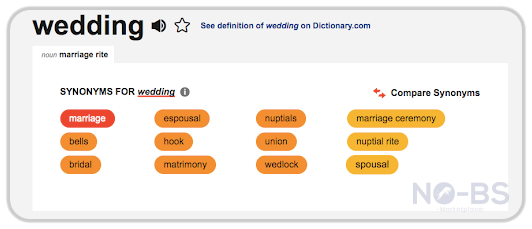

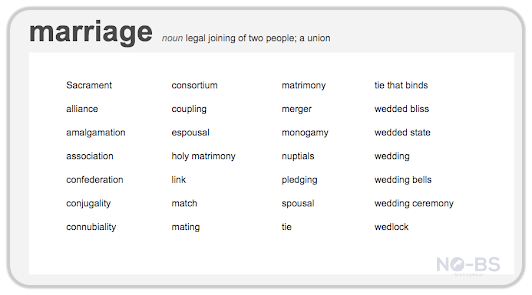
As you can see, this gives you more keyword options which could allow better prospect opportunities.
Metrics
After creating your list of prospects using your outreach tools, (we’ll go into those a little more down further), the next thing you need to look into is the metrics of the site and whether it would be suitable to link to.
The four key metrics that many use include:
- Domain Authority (DA)
- Domain Rating (DR)
- Trust Flow (TF)
- Traffic
These aren’t the only metrics, but depending on your SEO goals will depend on the metric you choose to follow.
Generally websites with metric numbers of 15+ and 1000+ in traffic are a good place to start. However, some websites may have low metric ratings, but this doesn’t mean the website is bad. It may just mean the website is new and still building it’s authority.
Looking at this screenshot below you’ll see how different websites can be in different stages of their growth.
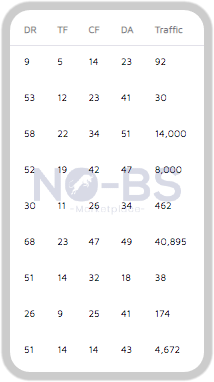
Some blogger outreach best practices to remember when choosing publishers and metrics include:
1. Watch out for good metric PBNs
Private blog networks are everywhere and they can hurt your rankings if you’re not careful. Three telltale signs of PBN’s are:
- They only have a blog, about us page, and a write for us page.
- The content they host is about everything and anything.
- The content written isn’t quality.
The following screenshot is a true sign of a PBN because it only has a homepage, about us page, contact page and a write for us page.
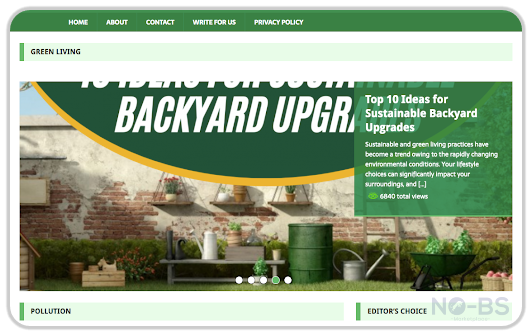
2. Try to aim for publishers that would take your content
If you’re a sports clothing website and you found publishers within the swimwear niche, unless you plan to promote sports swimwear, there’s no point wasting your time pitching content.

Instead choose publishers where you can write niche relevant content related to your site, even if the site is a very close second to your niche. This is relevant for all blogger outreach campaigns you set up.
Let’s show you what I mean.
For example, fitness clothing would suit fitness websites, family websites with content about fitness, possible health websites with an article about fitness etc.
When aiming for a website which may not be directly in the same niche as you, here’s some things to remember:
- Work on a topic that could blend both worlds together. For example; a health website vs a sports clothing website. A topic could be: How Fitness Is Fighting Back Against Obesity or X Best Fitness Regimes To Try This Year For Ultimate Health. The reasons why this works is because it:
- ties in with the publisher site = health
- ties in with the client/your website
- allows you to write a relevant paragraph within the article talking about how having the right fitness clothing can help improve your workout and motivation.
- Look for opportunities for other types of content and pages to link to. For example, a law site doesn’t always need to link to other law sites. If you help clients in medical malpractice, dog bite injuries, vehicle accidents, or divorce, it opens up many doors to link to sites in the niches of health, animals, automotive, and family.
- Always use themed link building when producing content. This means use your keyword in the title of the article, H1 and H2 and then write content which is relevant to surround your link. Here’s an example of a before and after for the fitness website with the anchor = fitness clothing.
Traveling in a car allows you to wear whatever you want. Fitness clothing is comfortable and gets you motivated. Don’t forget though to always pack light when traveling short distances.

Doesn’t make sense right? Now let’s look at this version:
Exercising early mornings is a great way to start the day. Having the right fitness clothing is essential to staying motivated throughout your workout. Many people get dressed in their fitness gear as soon as they get out of bed. This helps their mind prepare for the early morning workout.
Better right?
Keep themed link building in mind when you write your content. Here’s a great article we wrote about themed link building.
3. Real businesses with low metrics are just as good as high metric blogs
If you can score a blog on a real business website with lower metrics, it’s still as good as blogs with high metrics. Why? Because real business websites generally don’t have time to work on blog content depending on the niche they’re in.
Let’s take a plumber for example, they may not have the time or resources to devote to their blog, the website metrics may be on the lower end, but you can check their website statistics via Ahref.com, and other metric tools, to see if their traffic has been slowly growing over time.
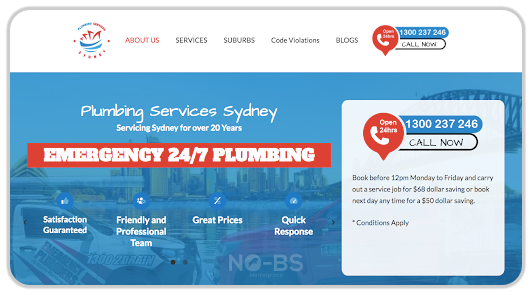
You can also see if they’ve been able to dedicate time to their blog by viewing the date of the last published article. If you look at this website, it was last updated on May 25 2021.
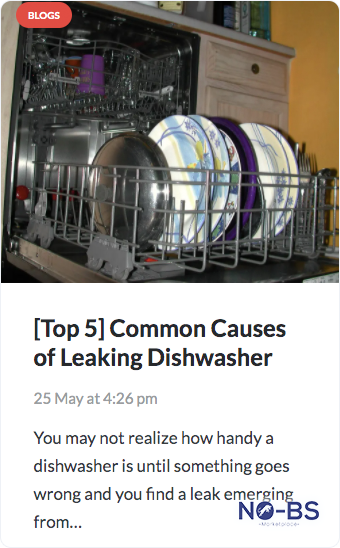
If you can score a blog on a website like this, it’s a great find and super relevant if you’re within the same niche as well. These types of sites are diamonds in the rough because you know they haven’t been spammed by hundreds of guest posts and potentially poor quality link building tactics.
Now you know the basics of what to look for, and what not to look for, it’s time to:
Choose The Right Outreach Tools
These days utilising outreach tools is a good way to not only reach more people at the one time but to help you scale your outreach efforts along the way. The top 5 outreach tools you can try include:
Buzzstream
Buzzstream is a great outreach tool to help build powerful lists in relation to your outreach needs. This tool helps you to manage all your outreach from start to finish.
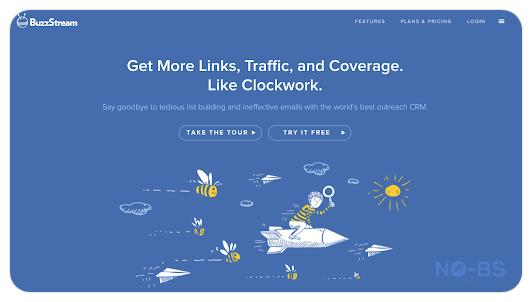
Pitchbox
Pitchbox is another great outreach tool that can help you from start to finish. This tool helps you find prospects as well as better manage your outreach emails for more effective outreach.
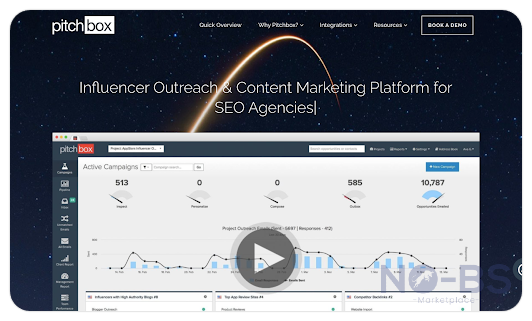
Buzzsumo
Buzzsumo is another good tool to use to find influencers and content trends. Simply add a topic and the system will find relevant influencers to suit.
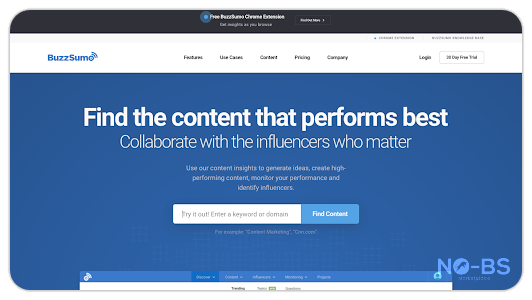
Ninja Outreach
Ninja Outreach helps you find influencers within your niche easier. It also helps you to manage your emails more effectively with its easy management of contacts.
The outreach tool you choose is only as good as the outreach method you use. This is where you need to:
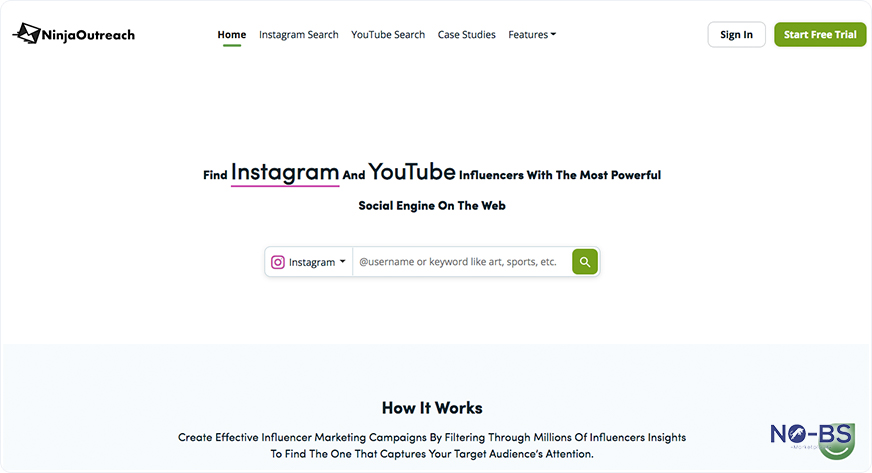
Choose Your Outreach Method: Shotgun vs Sniper Outreach
You may have heard of the shotgun or the sniper outreach methods but not quite understand what these are. Here’s a run down of these methods to help work out which one is the best option for you.
1. Shotgun
If you think about how a shotgun works, it sprays bullet fragments in lots of directions when fired. Now think about emails in this manner. The shotgun outreach method means sending bulk emails with the same template to hundreds of people hoping to get responses. Does it work? Yes it can work but you have to be strategic on the templates used.

2. Sniper
Let’s think of how a sniper works. They line up their target and take one good shot. Now think about how this translates to email. The sniper method is about analysing a publisher, tailoring an email directly for them, and then sending emails one and a time.

Both of these methods are really great options when it comes to outreach. Because of this many companies tend to use a mix of both in their campaigns to see which ones deliver the best outcome. What you choose to use is entirely up to you, it ultimately depends on the money, time and resources you can allocate to each method.
Getting Your Email Ready For Outreach
Warming up a newly created email is essential to avoid your email going into the spam box. Email warming involves a tool which automatically sends emails from your inbox to recipients which will open them, and email back. This helps to warm an email address to reduce the risk of it going into spam. Two of the top email warmers are:
Mailwarm
Mailwarm is designed to help you increase your reputation as a sender because it positively interacts with your emails, each day. How mailwarm works is it automatically sends emails from your email address to over 1000 mailwarm accounts which then reply.
The idea of doing this is to help reduce your emails going into spam folders and have your emails marked as important for better long term success with future outreach campaigns.

Warm Up Your Email
Warmupyouremail works like Mailwarm where their team interacts with your emails and replies to them after reading them. If your email ends up in spam, they take it out of spam to help reduce future emails from ending up in the spam folder.

Building Email Templates and Subject Lines
Building email templates ties in with how you segment your audience and the publishers you want to target. When building emails no matter if you do the sniper or shotgun approach there’s a few things you need to remember:
- Create an email which gets straight to the point: You’ve probably received an email before about how someone has viewed your blog and they really like it, and how they really feel your content is valuable but wait… they then have a piece of content that they feel is good for your website.
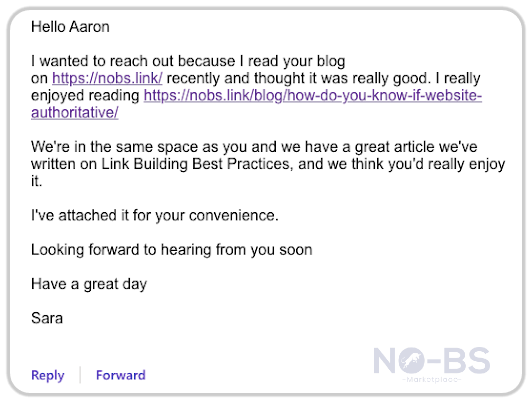
These emails are good, but they’ve been used to death and they don’t get straight to the point. The average time someone reads an email is between 10-20 seconds. Emails like this cause the recipient to lose focus, instead it’s best to politely get to the point of what you’re trying to say.
Here’s an example:
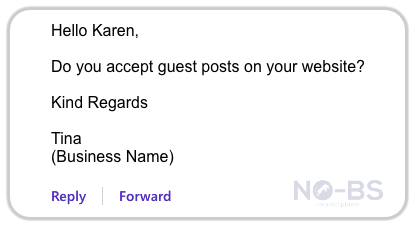
Now thinking about both long and short emails, which one would you be more inclined to read and answer to? For me I’d choose the shorter version over the longer version any day.
- Avoid subject lines which have spam trigger wording: Spam trigger wording is the reason why people won’t open your emails. These words include some of the following: free, amazing, best price, one-time offer, offer, collect, discount, save, winner, satisfied etc. Let’s take a look at two different examples of outreach email subject lines. Here’s an example with spam trigger words.

Here’s an example without

Which one are you inclined to open if you were accepting guest posts on your website? I’d be more included with the second option
- Avoid Spammy Templates: We’ve all seen them come into our inbox. They generally start with Dear Sir or something similar. This is not how you contact your publishers about something you want to sell.
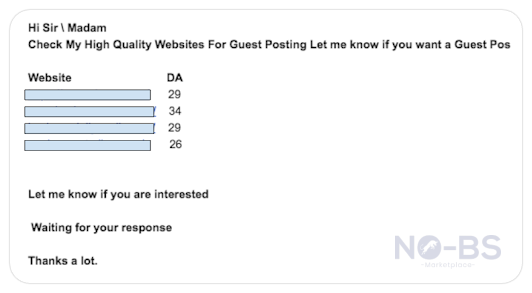
Always check spelling as well no matter what template you use. There’s nothing worse than receiving a pitch and it has mistakes throughout the email body. It’s not professional.
Monitor Email Data and Adjust Campaigns As Needed
Each outreach tool you use should have some sort of reporting functionality. Platforms like Buzzstream for example will show you how many emails were sent out, the open rate, the click-through rate and the reply rate.

So let’s use the above as an example. We can see #1 had the highest open rate (but also the most emails sent out) compared to #2 and #3. Since open rate is related to the subject line, we need to work out the percentage based on emails sent. This can be done by using an online percentage calculator.
Row #1.

Row #2

Row #3

From this we can see that the subject line of row #1’s template was the most successful when it comes to open rates.
The next thing to look at is the click rate. This is in relation to the recipient clicking on your email. As you can see below row #1 has a higher click-through rate than the other two rows.

Last thing we have to look at is the reply rate. From below we can see again that Row #1 has the highest reply rate as well.
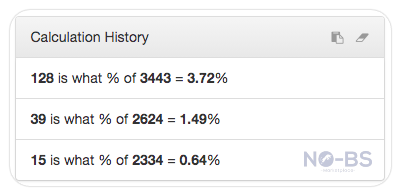
So in this example Row #1 is the highest performing outreach campaign.
If you have several different email campaigns across multiple team members then this method is good to work out the best subject line, click rate and reply rate.
Let’s look at this below as an example. Here we have 4 team members which have different open rates. From here we can see Team 1 has the highest open rate (subject line), Team 3 has the highest click rate, and Team 1 again has the highest reply rate.

Based on this data, your campaign should have the subject line of Team 1, and the positioning of the company link as Team 3 has it but within Team 1’s email template.
In doing this, it can help you have a higher success rate in your overall outreach campaign.
Always remember to analyse your data every 3 months to adjust templates and subject lines.
How Bloggers Can Positively Influence Your Brand’s Exposure
To capture the right audience for your brand, your marketing efforts shouldn’t be geared directly towards selling your product or service, but to educate your consumers first! This is in context to Google’s call for authentic, relevant and fresh content to all website owners.
As a brand, your job is to define what’s irresistible about your offerings and how it can outshine those of your competitors’. Next, is to find the right storyteller who can effectively deliver your brand promise to your target audience.
Here are ways through which bloggers positively influence your brand’s exposure:
1. They Speak as Consumers
Since most bloggers are regular individuals expressing their own opinions on products or services, their subscribers consider them as fellow consumers, themselves. Because of their candid approach, it’s so easy for viewers to associate authenticity to their reviews. As a brand, it’s important to pick an influencer that speaks your target audience’s language. A huge following shouldn’t be your sole basis on whether a blogger fits your campaign or not. Consider the approach and the style as core elements before partnering with a blogger.
2. Their Content Has An Element Of Virality
Any content uploaded online has the potential to become viral. Although it’s not wrong to ask a blogger to create viral content for your brand, there are certainly key elements that can propel a blogger’s material to go viral.
For example, vlogger, Anna Akana’s videos on her Youtube channel have over 2.5 Million subscribers and 226 million video views. She’s popular for her witty, straight to the point, visually playful and concise content that she publishes.

The way she articulates the ugly realities of relationships in a blunt, yet hilarious, way appeals to her millennial viewers really well. At the end of every sponsored video, Anna further educates viewers by mentioning the services offered by her brand partner without sounding too pushy. You can see her followers engage with her as seen in the comments below:
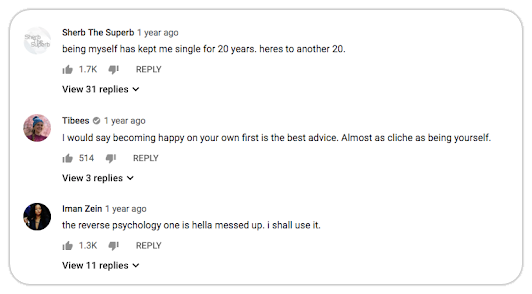
3. They Are Perceived As An Authority In Their Respective Fields
Here’s a great example of how certain bloggers and influencers can have high authority which brands and businesses can leverage to their own advantage. With over 22 billion accumulated video views on Youtube and 97 Million subscribers, Swedish Youtube sensation, PewDiePie has captured a significant pool of young viewers in the gaming community. He’s well noted for his Let’s Play – styled video game commentaries that are comedic and tagged as unfiltered, goofy, although sometimes, profane.

Pewdewpie’s commentaries have positively influenced the commercial success of many video games and has inspired developers to incorporate Pewdewpie to certain elements to their game.
4. They Are Visible In Multiple Platforms
Lastly, bloggers are known for their omnipresence in the digital space. Every content uploaded on one social media asset is cross posted to other accounts, allowing maximum exposure for all their materials. Because of their accessibility to their followers, it’s beneficial for brands to collaborate on projects with them. Be it Facebook, Twitter, Instagram, or Youtube, content is delivered in a format that is tailor-fit to the audience of a given platform. Although bloggers boast a huge following, their audience remains targeted. Everyone in their pool of followers shares the same interests and sometimes, a similar demographic.
In A Nutshell
Blogger outreach essentially paves brands to borrow the credibility of their chosen blog partners. For this partnership to be possible, there has to be a symbiotic relationship between the two parties. Have you got a chance to tap potential bloggers for your brand? If not you can get started with our Blogger Outreach Service.
Subscribe to Our Blog
Stay up to date with the latest marketing, sales, service tips and news.
Sign Up
"*" indicates required fields


